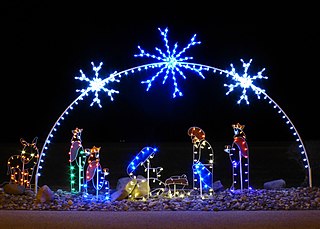
Christmas is an annual festival commemorating the birth of Jesus Christ, observed primarily on December 25 as a religious and cultural celebration among billions of people around the world. A feast central to the liturgical year in Christianity, it follows the season of Advent or the Nativity Fast, and initiates the season of Christmastide, which historically in the West lasts twelve days and culminates on Twelfth Night. Christmas Day is a public holiday in many countries, is celebrated religiously by a majority of Christians, as well as culturally by many non-Christians, and forms an integral part of the holiday season surrounding it.
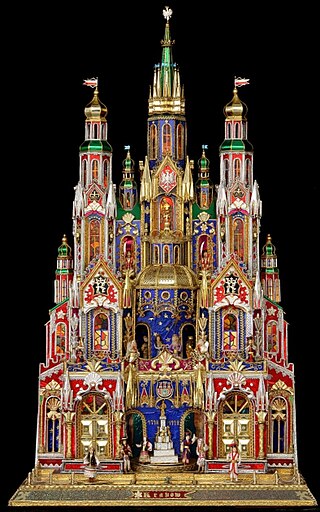
Christmas in Poland is a major annual celebration, as in most countries of the Christian world. The observance of Christmas developed gradually over the centuries, beginning in ancient times; combining old Polish pagan customs with the religious ones introduced after the Christianization of Poland by the Catholic Church. Later influences include the mutual permeating of local traditions and various folk cultures. It is one of the most important religious holidays for Poles, who follow a somewhat strict traditional custom. Christmas trees are decorated and lit in family rooms on the day of Christmas Eve. Other trees are placed in most public areas and outside churches. Christmas in Poland is called "Boże Narodzenie", which translates to 'God's Birth'.

A Christmas tree is a decorated tree, usually an evergreen conifer, such as a spruce, pine or fir, or an artificial tree of similar appearance, associated with the celebration of Christmas.

In the Christian tradition, a nativity scene is the special exhibition, particularly during the Christmas season, of art objects representing the birth of Jesus. While the term "nativity scene" may be used of any representation of the very common subject of the Nativity of Jesus in art, it has a more specialized sense referring to seasonal displays, in particular sets of individual sculptural figures and props that are arranged for display.

An Advent calendar, from the German word Adventskalender, is used to count the days of Advent in anticipation of Christmas. Since the date of the First Sunday of Advent varies, falling between November 27 and December 3 inclusive, many reusable Advent calendars made of paper or wood begin on December 1. Others start from the First Sunday of Advent.

Christmas lights are lights often used for decoration in celebration of Christmas, often on display throughout the Christmas season including Advent and Christmastide. The custom goes back to when Christmas trees were decorated with candles, which symbolized Christ being the light of the world. The Christmas trees were brought by Christians into their homes in early modern Germany.

The Striezelmarkt in Dresden is one of the first genuine Christmas markets in the world. Founded as a one-day market in 1434, it celebrated its 585th anniversary in 2019. Its 240 stands attract about 3 million visitors from all over the world. The annual market lasts throughout the Advent season until Christmas Eve.
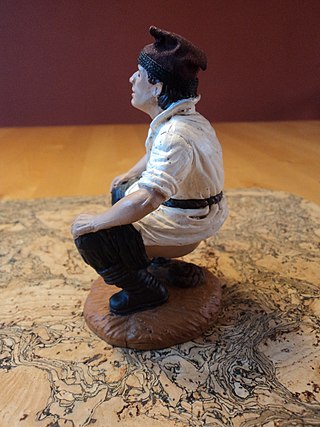
A Caganer is a figurine depicted in the act of defecation appearing in nativity scenes in Catalonia and neighbouring areas with Catalan culture such as Andorra, Valencia, Balearic Islands, and Northern Catalonia. It is most popular and widespread in these areas, but can also be found in other areas of Spain (Murcia), Portugal, and Southern Italy (Naples).

The observance of Christmas around the world varies by country. The day of Christmas, and in some cases the day before and the day after, are recognized by many national governments and cultures worldwide, including in areas where Christianity is a minority religion. In some non-Christian areas, periods of former colonial rule introduced the celebration ; in others, Christian minorities or foreign cultural influences have led populations to observe the holiday.

A Christmas decoration is any of several types of ornamentation used at Christmastide and the greater holiday season. The traditional colors of Christmas are pine green (evergreen), snow white, and heart red. Gold and silver are also prevalent, as are other metallic colours. Typical images on Christmas decorations include Baby Jesus, Mother Mary, angels, Father Christmas, Santa Claus, and the star of Bethlehem. Advent wreaths, nativity scenes, illuminations, and Moravian stars are popular Christmas decorations.

The town of Seiffen is located in the district of Erzgebirgskreis, which is in the central south of the Free State of Saxony in Germany. The earliest record of the town dates to 1324 when it was referred to as "Cynsifen".

A Schwibbogen is a decorative candle-holder from the Ore Mountains region of Saxony, Germany. The first metal schwibbogen was made in 1740 in Johanngeorgenstadt. The early candle arches consisted of a single forged piece of black metal which could be painted. The number of candles varies with the size of the arc, the original design holding eleven. In the UK candle arches or candle bridges are marketed, often just consisting of a simple wooden stepped arch with 7 electric candles. These are not strictly schwibbögen.
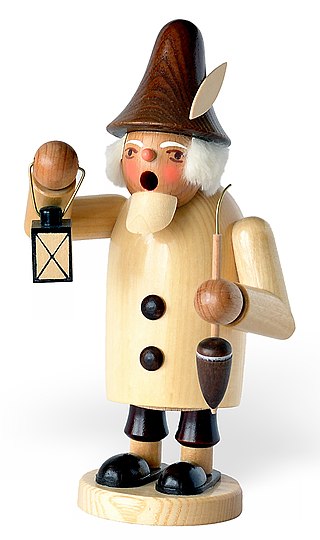
The Räuchermann, erzgebirgisch Raachermannel is an incense smoker, the invention of toy makers in the Ore Mountains, used to burn down cone incense, known as Räucherkerzchen.
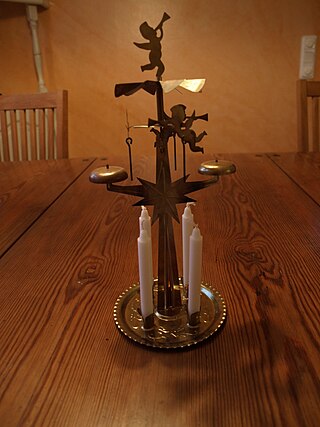
Angel chimes, also known as angel-abra, are a form of Christmas decoration popular in Europe and North America. They apparently have the same origins as the Christmas pyramid, which functions on the same principle. They differ from these, primarily, in being mass-produced from metal and having bell-ringing angels, whereas Christmas pyramids are usually crafted from wood and do not necessarily have bells.
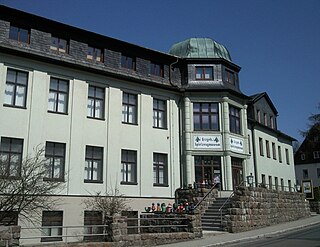
Ore Mountain folk art is a well-known form of highly artistic wood carving from East Germany. It encompasses the diverse forms of expression of the creative work beyond the classical or the modern arts, and in particular the production of figures, sculptures and paintings. In a broader sense, the people's poetry, literature, and the Ore Mountain songs are in itself the folk art. The Ore Mountains claim to be the largest, enclosed folk art area in Germany.
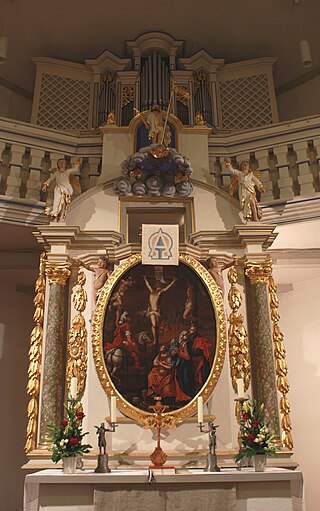
A miner's figure is a traditional Christmas decoration from the Ore Mountains of central Europe. Miners' figures are turned or carved out of wood, and often bear two candles. They are usually displayed together with an angelic figure, also bearing a candle. This pair is intended to symbolize the relationship between man and woman or the worldly and spiritual aspects of life.

Christmas in Mexico is observed from December 12 to January 6, with one additional celebration on February 2. Traditional decorations displayed on this holiday include nativity scenes, poinsettias, and Christmas trees. The season begins with celebrations related to the Virgin of Guadalupe, the Patroness of Mexico, followed by traditions such as Las Posadas and Pastorelas.

The Dortmund Christmas Market is an annual outdoor Christmas market held every year in central Dortmund, North Rhine-Westphalia, Germany. With more than three and a half million visitors of 300 stalls, it is one of the biggest Christmas markets of the world and brings tourists from all over the world to Dortmund. It is estimated that the city benefits of a 100 million Euros profit from this 38-day-long tradition.

Christmas traditions include a variety of customs, religious practices, rituals, and folklore associated with the celebration of Christmas. Many of these traditions vary by country or region, while others are practiced virtually identically worldwide.

Christmas angels are small wooden figures portraying angels often playing an instrument. They can be arranged to an entire orchestra. The origins of artistic angel carving lie in the Ore Mountains where the angels are an integral part of Ore Mountain folk art.






















